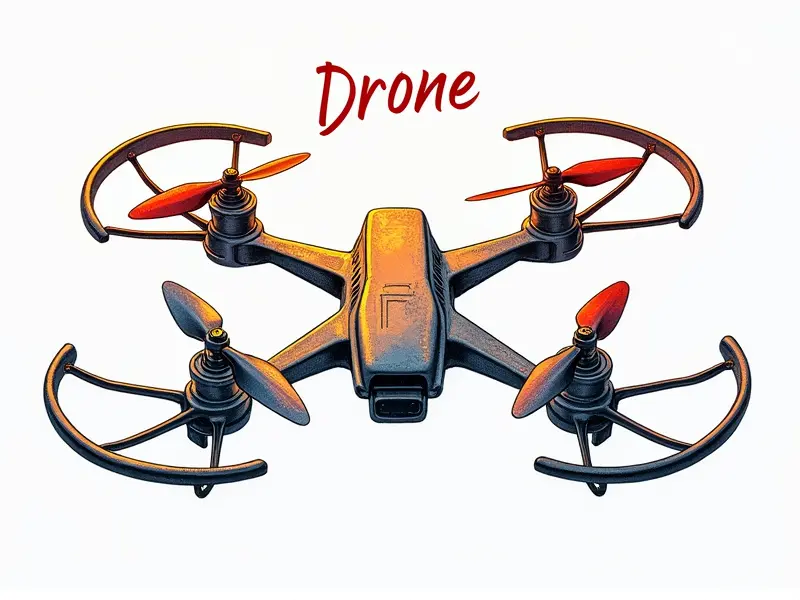Can I fly drones indoors?

Flying drones indoors can be an exhilarating experience, but it comes with its own set of challenges and regulations. This article explores the ins and outs of indoor drone flying, from choosing the best models to understanding safety considerations and legalities.
Best Indoor Drones for Small Spaces
Selecting the right indoor drone is crucial for a safe and enjoyable experience. Here are some top picks:
- DJI Mini 2: Compact and lightweight, making it ideal for small indoor spaces.
- Hubsan X4 H107D: Known for its agility and ease of use, perfect for beginners.
- Tello EDU: Equipped with advanced features like FPV camera and programmability.
Tips for Flying Drones Inside Safely
Flying drones indoors requires careful planning to avoid accidents. Here are some essential tips:
- Clear the Area: Ensure there is ample space without obstacles like furniture or people.
- Use Obstacle Avoidance Technology: Opt for drones with sensors that detect and avoid objects.
- Practice in a Controlled Environment: Start by flying in a small, enclosed area before moving to larger spaces.
Indoor Drone Flight Challenges Explained
Flying indoors presents unique challenges compared to outdoor settings. Here are some common issues and how to address them:
- Limited Space: Use drones designed for small indoor spaces.
- Lighting Conditions: Opt for drones with high-quality cameras for better visibility in low light.
- Noise Levels: Be mindful of noise restrictions, especially in residential areas.
Top Indoor Drone Models Revealed
The market offers a variety of indoor drone models tailored to different needs and skill levels. Here are some top choices:
- DJI Mini 2: Compact, lightweight, and easy to control.
- Hubsan X4 H107D: Highly maneuverable with a stable flight pattern.
- Tello EDU: Educational model designed for learning and experimentation.
Secrets of Successful Indoor Drone Flying
Mastery in indoor drone flying involves more than just selecting the right equipment. Here are some insider tips:
- Practice Regularly: Consistent practice improves your skills and enhances control.
- Understand Your Drone's Capabilities: Familiarize yourself with all features and limitations.
- Join Online Communities: Engage with other drone enthusiasts to learn tips and tricks.
Legalities of Flying Drones Indoors
While indoor flying is generally less regulated than outdoor, it’s still important to understand the legal landscape. Here are some key points:
- Local Regulations: Check local laws and ordinances regarding drone use.
- Privacy Concerns: Be mindful of privacy issues when flying in public or private indoor spaces.
- No-fly Zones: Avoid areas designated as no-fly zones, such as certain buildings or events.
Indoor Drone Flying Rules & Regulations
While less stringent than outdoor regulations, there are still rules to follow when flying indoors. Here’s what you need to know:
- Building Owner Consent: Obtain permission from the property owner or manager.
- Safety Protocols: Follow safety guidelines provided by drone manufacturers and industry organizations.
- No-fly Zones: Respect designated no-fly zones to avoid legal issues.
Indoor Drone Racing: What You Need to Know
Drone racing indoors is gaining popularity but requires careful planning. Here’s how to get started:
- Select a Suitable Venue: Find an indoor space with ample room and suitable lighting.
- Use FPV Technology: First-person view (FPV) systems enhance the racing experience.
- Practice Regularly: Consistent training improves your skills and reaction time.
Maximizing Your Indoor Drone Experience
To get the most out of indoor drone flying, consider these strategies:
- Vary Your Environments: Experiment with different indoor settings for varied experiences.
- Leverage Technology: Use advanced features like obstacle avoidance and GPS to enhance flight capabilities.
- Engage in Community Activities: Participate in local drone clubs or online forums to network and learn from others.
Safety Considerations for Indoor Drone Use
Safety is paramount when flying drones indoors. Here are some crucial safety measures:
- Wear Protective Gear: Use goggles, helmets, and other protective equipment as needed.
- Inspect Equipment Regularly: Ensure all parts of your drone are functioning properly before each flight.
- Avoid High-Risk Areas: Stay away from areas with high foot traffic or fragile objects.
Setting Up an Indoor Drone Arena
To create a dedicated indoor drone flying space, follow these steps:
- Select a Suitable Room: Choose a large room with minimal obstacles and good lighting.
- Install Safety Measures: Place protective barriers around the perimeter of your arena.
- Create an Obstacle Course: Set up cones or markers to simulate outdoor flying conditions.
Conclusion
Flying drones indoors can be a thrilling and rewarding experience, but it requires careful planning and adherence to safety guidelines. By selecting the right drone model, understanding legalities, and setting up a safe environment, you can enjoy all the benefits of indoor flying while minimizing risks.

